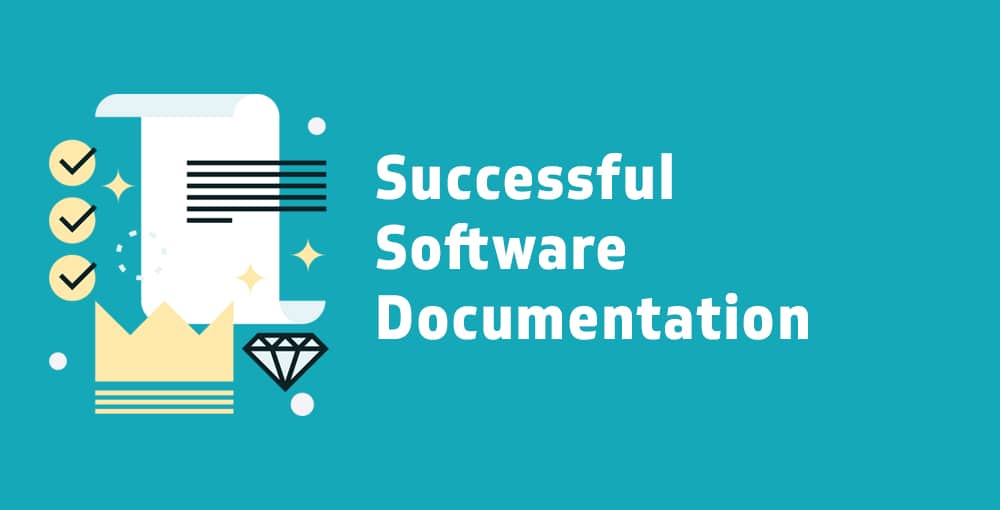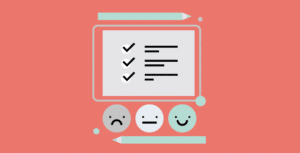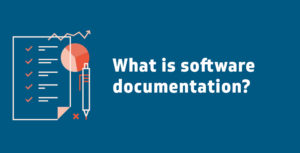Imparting user knowledge can be time consuming and work intensive. From introducing a user to a software product to training a new employee in a company can be an immense but above all avoidable burden on customer support, IT support and key users.
It is avoidable because software documentation, if easily understandable, makes said burden virtually non-existent. Ideally, it enables the user to obtain the required user knowledge independently and without further questions. Not only does this relieve the responsible departments, but also ensures smooth software operation and can increase user satisfaction.
But what is it that makes software documentation successful? We have compiled five best practices to help you create software guides that everyone understands.
Successful Software Documentation in 5 Steps
- What is the problem? Find out which recurring problems you can solve effectively with software documentation.
- Who needs help? Identify your target group to determine the level of detail of your guide.
- Which form is appropriate? Step-by-step instructions vs. user manuals.
- How do I create a successful step-by-step guide? A smooth transfer from problem to solution.
- How do I know if the software documentation is easy to understand? Reflection and testing.
What is the problem? Find out which recurring problems you can solve effectively with software documentation.
The successful transfer of user knowledge requires a precise identification of the problem. For instance, it should be identified whether the problem is a recurring one or whether it is an individual case. If the problem occurs frequently, a company’s IT support can be significantly unburdened by comprehensible software documentation.
The same applies for the onboarding process of employees. Nowadays, employee transfers in companies are only a matter of time. The training of new team members is time-consuming and can be carried out much more efficiently with step-by-step instructions. In addition, comprehensible software documentation can make an important contribution to maintaining employee knowledge. Just because a member leaves the team doesn’t mean that their knowledge has to!

Who needs help? Identify your target group to determine the level of detail for your guide.
Once you identified the problem that needs solving, the next step is to determine the target group for your software documentation. You should be clear about who you are passing the information on to, to ensure that the software documentation departs at an appropriate level. An example would be to ask yourself the question of how much competence can be expected, for instance, from a customer so that the software documentation helps him or her to solve the problem independently? The more limited the existing user knowledge, the more detailed the step-by-step instructions should be. Even those steps that seem unnecessary for the expert need to be recorded in detail. You should pay attention to similar scenarios when onboarding a new team member to ensure a smooth introduction process.
Briefly put, you should pay close attention to the target audience of your software documentation to ensure that you are assuming the right level of knowledge. This is certainly not an easy task, however, once the information about the target audience is available, it will help you a lot in creating your successful software documentation.
The bottom line is to keep your software documentation as simple as possible and as detailed as necessary, regardless of the audience targeted.
Which form is appropriate? Step-by-step instructions vs. user manuals.
Software documentation comes in different types and forms, all of which aim to explain and make software available to developers, users and end users. At miraminds we are particularly concerned with conveying user knowledge by means of step-by-step instructions generated by our documentation software FlowShare.
Why step-by-step instructions? Because this form of software documentation conveys user knowledge exactly when it is needed––namely along the workflow. While user manuals are often detailed and comprehensive in content, they are also more labor-intensive both to create and to navigate. The longer it takes to find a solution in a user manual, the more likely the user will look for solutions elsewhere. Not only does this indicate that the goal of the software documentation, namely self-help by the user, hasn’t been met. It also means that the creator of the user manual may have put a lot of time and effort into this documentation––and ultimately wasted it.

How do I create a successful step-by-step guide? A smooth transfer from problem to solution.
Back to the main subject, the creation of your step-by-step guide. After successfully identifying the problem and the target group, you should now have an overview of where the guide takes off and where it should lead. In the next step, it is important to make this “journey” as smooth as possible, whereby the content and visual design of your software documentation comes into play.
As far as content is concerned, it is important to ensure, as mentioned above, that there are no gaps that could leave the user behind. In addition, the formal structure of your step-by-step instructions should be coherent and logical. This concretely means that individual steps, e.g. screenshots, should be in the correct order and there should be no major jumps.
While the exact visual design of your software documentation is of course a matter of taste, the core concern is to present content in a clear and appealing way. Remember, a picture is worth a thousand words: The good thing about software documentation tools such as FlowShare is that the screenshot itself provides information about the step that is to be followed. It can be off-putting for the user if the documentation is overloaded with text. Again, there is a risk that a faster and more convenient solution is sought elsewhere. For instance through the IT support – something that was intended to be avoided through your software documentation.
How do I know if the software documentation is easy to understand? Reflection and testing.
People who are occupied with a specific subject for a period of time know the problem: At some point you can no longer see the forest for the trees. This can happen in any context and just as easily when creating software documentation.
Especially where there is a large discrepancy between the knowledge of the documentation author and the target group, what can can happen is that, despite meticulous analysis, certain knowledge is taken for granted. As mentioned before, a documentation that seems conclusive to the creator is not necessarily comprehensible to the user. In this case it helps to get a fresh pair of eyes to test the effect of the documentation.
Ideally, your test subject is someone who is not already familiar with your software. This way, you can make sure that your software documentation serves its purpose, namely to make the software in question accessible to the user – without additional help.
In Sum...
In order to create successful software documentation, some groundwork is required. Once you are aware of what exactly it is you want to communicate and to whom, you will have the basis for successful software documentation in no time. What’s more: For the work you put into your step-by-step instructions you’ll save a lot of effort, time and money in other areas and make future business processes – be it IT or customer support or training new employees – much more efficient.
Finally, for those of you who get a headache when thinking about creating software documentation by hand, there are good news. With our documentation software FlowShare you have the possibility to create step-by-step instructions without much effort and up to 9 times faster than by manually creating and individually editing single screenshots.
See for yourself! Download FlowShare today and test it for 14 days without obligations and free of charge.




